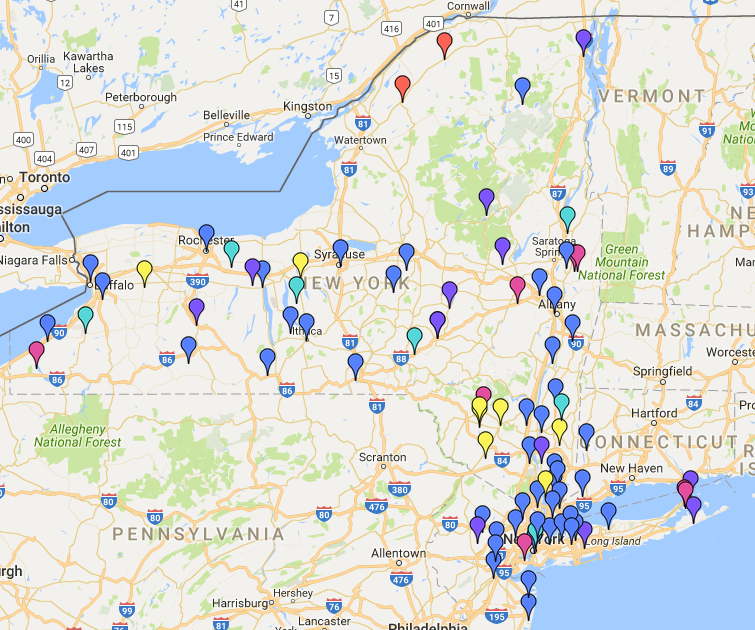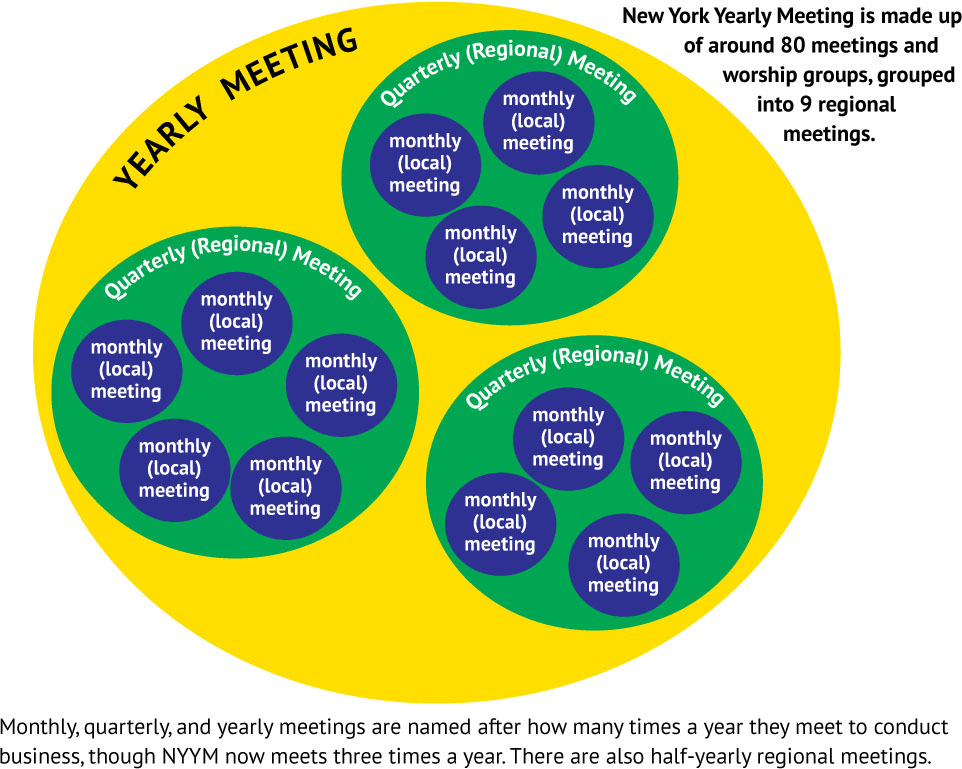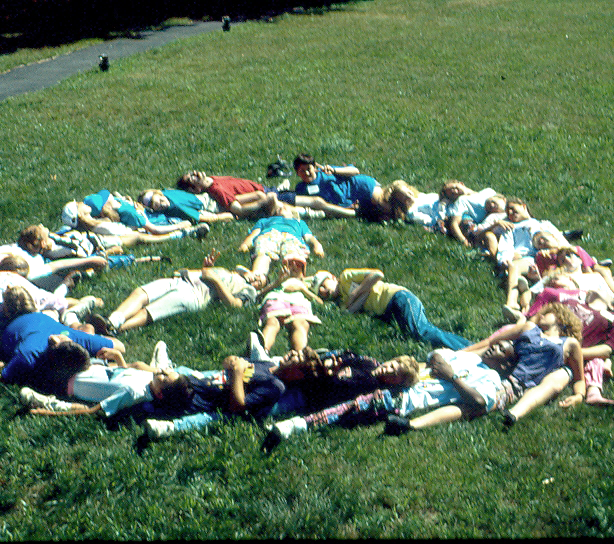Quaker Practice
Faith and Practice
Quaker practice—the way in which we do things—has evolved over the centuries out of the central Quaker faith and experience of guidance by the Holy Spirit, both as individuals and as worshiping communities. This informs
- how we worship,
- how we conduct our business as a community, and
- how we organize ourselves.
Quaker distinctives. This Spirit-led evolution has produced a large number of practices that are distinctive in the sphere of religious practice. For a full description of these as practiced in New York Yearly Meeting, we invite you to explore the practice section of our book Faith and Practice on this website. We offer some brief highlights below.
Worship
Visit our web page on Quaker worship
Forms of worship. Some meetings in New York Yearly Meeting hold worship services that are very like those of other Protestant denominations, with sermons, hymn singing, vocal prayer, scripture readings, and so on. However, most meetings worship in silent, expectant waiting, without any prepared elements or rituals, and without a presiding minister leading the congregation.
The radical simplicity of this form of worship is intended to strip away any outward forms that would distract us or lead us in a direction born of human design. We seek to leave the worshipers free to hear the still, small voice of God within us and to be led as a people by God.
Vocal ministry. Often during the meeting for worship, inner promptings of the Holy Spirit lead a Friend to rise and speak a message to the body out of the silence, leading the worship of the gathering in a direction of divine design. At least, this is the goal.
Business
Visit the Business section of our book of Faith and Practice.
Business as worship. Likewise, we conduct the business of the community in meetings for worship. In these meetings, however, a "clerk" presides, whose role is not to lead, but rather to serve the gathered body by managing the course of hopefully Spirit-led contributions to the decision making, by maintaining the spirit of worship, and by reflecting back to the body what she or he hears as the sense of the meeting, a sense of where the Spirit has led us on a particular matter for decision. When the body is clear about a decision, it is recorded as a minute by a recording clerk.
Sense of the meeting versus consensus. On the surface, this looks like consensus decision making, but it is not. In consensus decision making, the body seeks to find a solution that satisfies everyone enough to win their agreement. In the Quaker way, we seek to discern what God wants us to do, recognizing that the Holy Spirit has only us humans to work with. So we rely on Spirit-led contributions from individuals to guide us to a collective decision.
Ideally, we know we have discerned the divine wish for us when we feel the Spirit moving among us, not when the last objection has been satisfied.
Organization
Visit the Organization section of our book of Faith and Practice.
Committees without hierarchy. Because most meetings have no paid religious professionals, meetings organize their business through committees. Even meetings with pastors use a committee structure to manage most of their affairs. The conduct of worship, providing pastoral care, managing finances and property, organizing community events, pursuing our social witness activities—all these aspects of regular meeting life normally are undertaken by member volunteers in committees. We have no hierarchical structures in the way that many other faiths do.
Individual leadings and ministry. The one "exception" to organization by committee is the pursuit of leadings by individual Friends. Our faith and experience of leading by the Holy Spirit results sometimes in an individual feeling led to undertake some kind of service, or to pursue some form of ministry, independently of committee work. Even in such cases, however, ideally the meeting helps the Friend discern whether the leading is of the Spirit, and if so, it then often constitutes an ad hoc committee of care for the person so called, which provides support for the minister for the duration of their service.
Denominational organization. Local meetings, called monthly meetings because they hold business meetings monthly, usually belong to a yearly meeting, so called because the yearly meeting traditionally meets once a year to conduct its own business. New York Yearly Meeting has for some time met three times a year, twice over a weekend in spring and fall, and for a full week in the summer. Additionally, local meetings are organized by regional meeting, often called a quarterly meeting after the traditional practice of meeting four times a year.
Yearly meetings differ in how much "power" they have over local meetings. New York Yearly Meeting lies closer to the bottom-up end of this spectrum.





